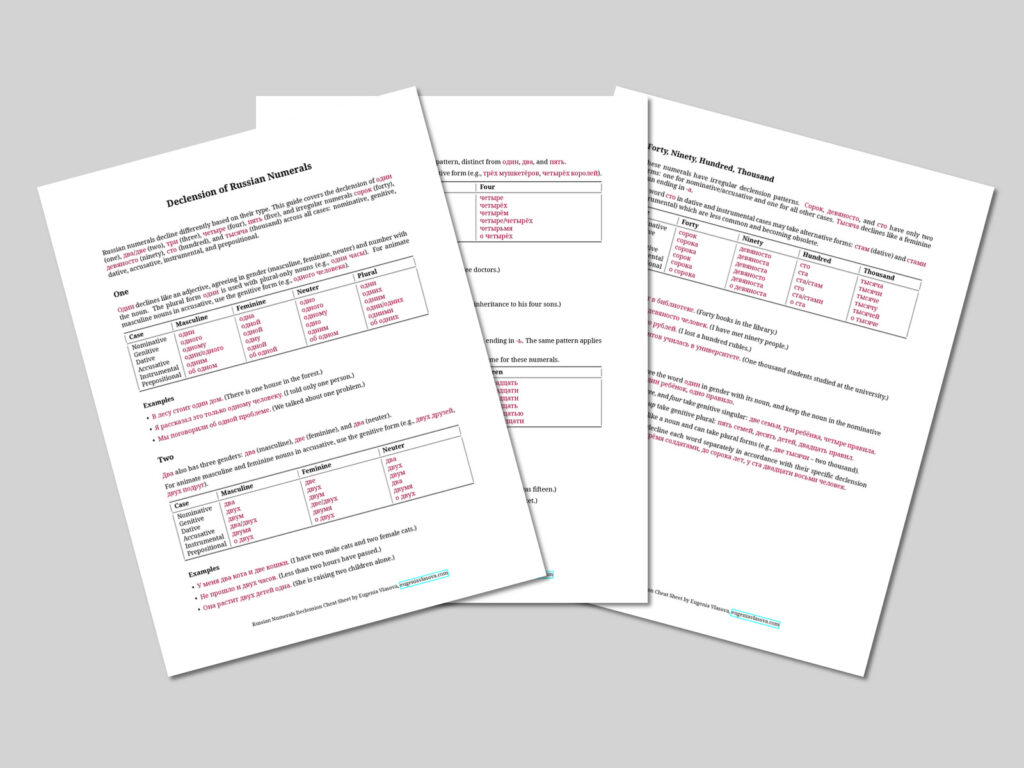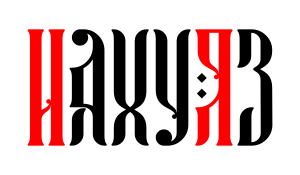As a linguist, I’m convinced every quirk in a language has a purpose. If something feels illogical, it’s usually my perspective that’s off, not the language itself. Languages are like living organisms—constantly evolving, adapting, and balancing trade-offs from their long histories. Expecting a perfectly tidy grammar system is like expecting a forest to grow in straight lines. It’s a rookie mistake.
I remind myself of this when I’m tangled in the web of French spelling or explaining to students why Russian’s “I go” (иду) morphs into шёл in the past tense (not a single letter shared!). But nothing challenges my faith in the organic wisdom of language quite like Russian numerals. Buckle up—this is where things get gloriously chaotic.
The Deceptive Simplicity of Russian Numerals
At first, Russian numerals seem familiar. Their roots trace back to Proto-Indo-European, linking them to other languages. The ancient duwo- became due in Italian, two in English, and два in Russian. Similarly, s(w)eks evolved into seis (Spanish), six (English), and шесть (Russian). Etymology buffs, your dictionaries will confirm these connections.
The words themselves aren’t the problem. It’s how they behave. Let’s break it down:
- Один (1) plays nice, acting like an adjective. It matches the noun’s gender (один народ [m], одна страна [f]) and number (одни слова). It declines like a standard adjective: у одного народа (genitive), в одной стране (prepositional), одними словами (instrumental). So far, so good.
- Два (2) starts to wobble. It reflects gender, but masculine and neuter forms are identical (два человека [m], два лица [n], две головы [f]). It declines somewhat like a possessive pronoun: у двух моих собак, к двум моим котам.
- Три (3) and четыре (4) ditch gender distinctions but follow a declension pattern similar to два: у трёх собак, четырём котам. They also care about animacy. For “I see three people,” you say Я вижу трёх человек (animate, genitive form). For inanimate objects, it’s Я вижу три кольца (nominative). Numerals five and up ignore this animate/inanimate split.
- Five and beyond are more predictable, sharing a consistent declension pattern: без пяти минут (genitive), к десяти часам (dative), с двенадцатью учениками (instrumental), в двадцати странах (prepositional). But watch out for пятьдесят (50), шестьдесят (60), семьдесят (70), and восемьдесят (80). Their soft sign (ь) shifts to и in genitive, dative, and prepositional cases (к пятидесяти годам, нет шестидесяти долларов), and to ю in instrumental (с восемьюдесятью шариками—the ю rhymes with the ending).
- Compound numerals? Decline each part separately: к пятидесяти восьми годам, с шестьюдесятью шестью долларами.
- Irregular curveballs: сорок (40), девяносто (90), and сто (100) take -а in all cases except nominative and accusative. Because why not?
Why So Messy?
Russian numerals aren’t trying to torment you (promise). Their chaos comes from their origins. Unlike nouns or verbs, numerals were never a unified grammatical category. They’re a hodgepodge of words from different classes, each dragging along its ancient quirks. The language didn’t care about making them consistent—it just used whatever words meant numbers. The result? A grammatical chaos.
Don’t Panic—You’re Not Alone
If Russian numerals make your head spin, take heart:
- Native speakers struggle too. Check Gramota.ru, where Russians puzzle over declensions like тысяча.
- Simplification is happening. Native speakers often skip declining complex numerals, and the grammar is gradually streamlining.
- You’re in good company. Even fluent second-language learners often master numerals last. Many count in their native language mentally, no matter how fluent they are.
To make your life easier, I’ve created a Russian numerals cheatsheet (PDF linked below). Grab it to have a handy reference for nailing those tricky declensions, like saying “I don’t have 100 dollars” (У меня нет ста долларов). It’s available for purchase—worth every penny to tame those numerals!

Got a tricky numeral declension tripping you up? Drop it in the comments, and I’ll help you wrestle it into submission. Let’s tame this chaos together!

